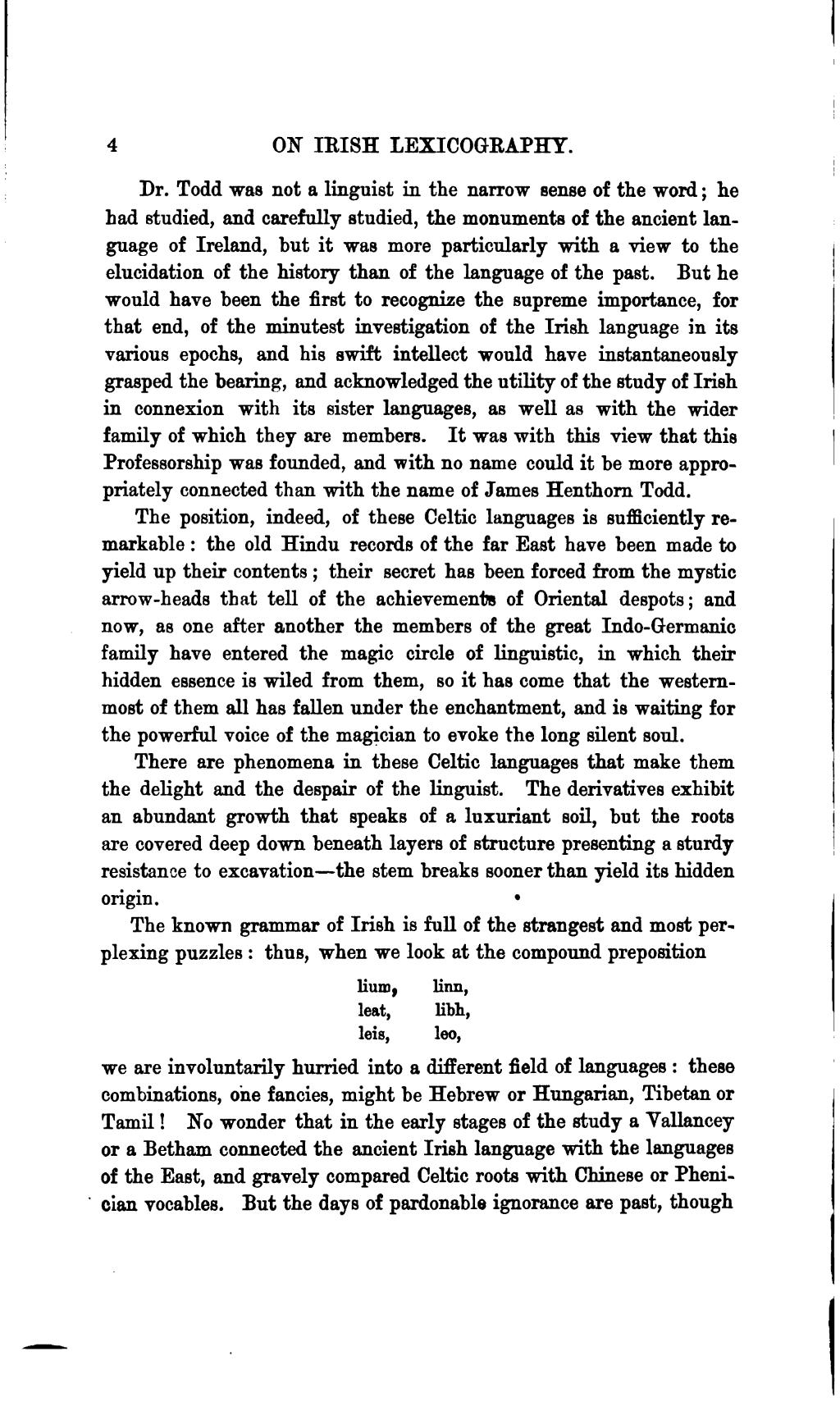Dr. Todd was not a linguist in the narrow sense of the word; he had studied, and carefully studied, the monuments of the ancient language of Ireland, but it was more particularly with a view to the elucidation of the history than of the language of the past. But he would have been the first to recognize the supreme importance, for that end, of the minutest investigation of the Irish language in its various epochs, and his swift intellect would have instantaneously grasped the bearing, and acknowledged the utility of the study of Irish in connexion with its sister languages, as well as with the wider family of which they are members. It was with this view that this Professorship was founded, and with no name could it be more appropriately connected than with the name of James Henthorn Todd.
The position, indeed, of these Celtic languages is sufficiently remarkable: the old Hindu records of the far East have been made to yield up their contents; their secret has been forced from the mystic arrow-heads that tell of the achievements of Oriental despots; and now, as one after another the members of the great Indo-Germanic family have entered the magic circle of linguistic, in which their hidden essence is wiled from them, so it has come that the westernmost of them all has fallen under the enchantment, and is waiting for the powerful voice of the magician to evoke the long silent soul.
There are phenomena in these Celtic languages that make them the delight and the despair of the linguist. The derivatives exhibit an abundant growth that speaks of a luxuriant soil, but the roots are covered deep down beneath layers of structure presenting a sturdy resistance to excavation—the stem breaks sooner than yield its hidden origin.
The known grammar of Irish is full of the strangest and most perplexing puzzles: thus, when we look at the compound preposition
| lium, | linn, |
| leat, | libh, |
| leis, | leo, |
we are involuntarily hurried into a different field of languages: these combinations, one fancies, might be Hebrew or Hungarian, Tibetan or Tamil! No wonder that in the early stages of the study a Yallancey or a Betham connected the ancient Irish language with the languages of the East, and gravely compared Celtic roots with Chinese or Phenician vocables. But the days of pardonable ignorance are past, though

